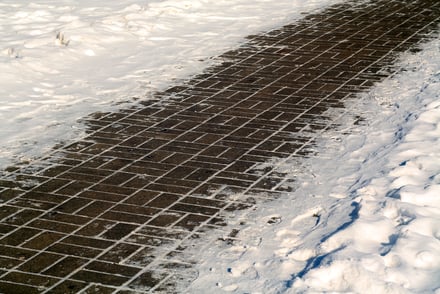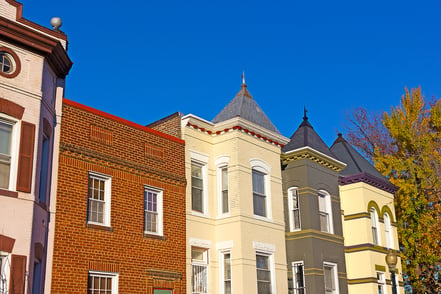The stately historic brick homes in most DC neighborhoods were constructed with relatively soft, porous bricks and limestone mortar. Many of the interior walls were covered with lime plaster. Occasionally these plastered walls, spackled and repainted during a renovation, show signs of bubbling. This is often caused by water damage to the exterior brick and mortar.
If bubbling is present in your interior walls, the solution can be found in the original materials used to build their old homes. Here's what you need to know about the cause of the damage:Traditional Tuckpointing Prevented Water Damage
The traditional materials used to build historic brick homes have held up over time due in part to the way they allow moisture to move safely through them. The problem comes if and when modern cement mortars and acrylic paints are applied. The brick and mortar walls can’t dry out as quickly and as the trapped moisture searches for ways to exit it can cause all kinds of damage. Even the interior plaster walls are fair game.
An old brick foundation will absorb moisture as it has always done. However, if an acrylic paint is applied to the exterior, it acts like waterproofing on that wall. Further, if cement mortar has been used to replace the limestone between the bricks, moisture moves up the wall and migrates out of the bricks through any avenue possible. In some cases, through the plaster walls inside. Those bubbles on the plaster walls are blisters of gypsum powder dissolved in the spackling and left when the moisture evaporates.
How to Repair the Water Damage to Mortar
Repairs involve both exterior and interior surfaces. Look for contractors who will:
- Strip the paint from the exterior brick façade. If not the whole wall, strip to at least five feet above ground level.
- Tuckpoint the joints, removing the cement mortar and replacing with traditional lime mortar. Consult a masonry contractor with experience and expertise in traditional methods and materials.
- Repaint with a limewash tinted to match the original paint color. An advantage of limewash is that it is highly breathable and will draw out the salt that may enter the wall in the future.
- Remove any gypsum based materials on the interior wall and replace with traditional lime plaster that is less sensitive to moisture. Cover with a top coat of casein paint – milk paint mixed with 1 percent boiled linseed oil.
- Check the basement wall. Chip off any waterproofing material to let the brick dry out on the inside.
With proper repairs you can maintain the restoration of your historic DC brick home, and ensure that it will last for decades and generations to come.
Renaissance Development, a leader in brick restoration and historic preservation, specializes in the restoration of a historic brick building’s mortar joints using traditional methods (tuckpointing) and materials. Contact us for a free site visit and project quote.
Tags:
RepairSep 27, 2018 8:30:00 AM


